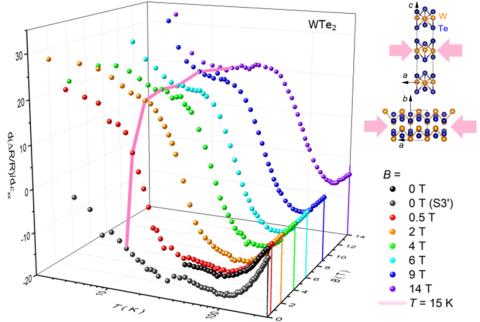Strain is a widely employed technique to probe and control the electronic properties of quantum materials. For example, measurements of elastoresistance, which describes the change of resistance due to applied strain, elucidated the nature of nematicity in iron-based superconductors. Theadvantages of employing strain is that it provides control over the symmetry of the elastic deformation. Thus, by selectively probingthe elastic response along certain crystallographic directions, we induce a desired symmetry change of the electronic and lattice structure, or couple to particular electronic orders and their fluctuations. By combining with a magnetic field, we provide another knob to tune elastoresistance, as well as a way to quantify electronic band structure changes under strain via quantum oscillations. The pseudo-1D lattice structure of WTe2 exhibits a large magnetoelastoresistance (MER) dominated by changes of the electronic structure caused by the elastic deformation. Using quantum oscillations, first-principle and analytical low-energy model calculations, we demonstrate the MER behavior arises from a redistribution of carriers between bands with different mobilities. Our results reveal a strong coupling of elastic and electronic degrees of freedom in the WTe2, opening a route to control magneto-transport properties via strain.
Na Hyun Jo, Lin-Lin Wang, Peter P. Orth, Sergey L. Bud’ko, and Paul C. Canfield, Magnetoelastoresistance in WTe2: exploring electronic structure and extremely large magnetoresistance under strain, PNAS 2019,116 (51) 25524-25529;

